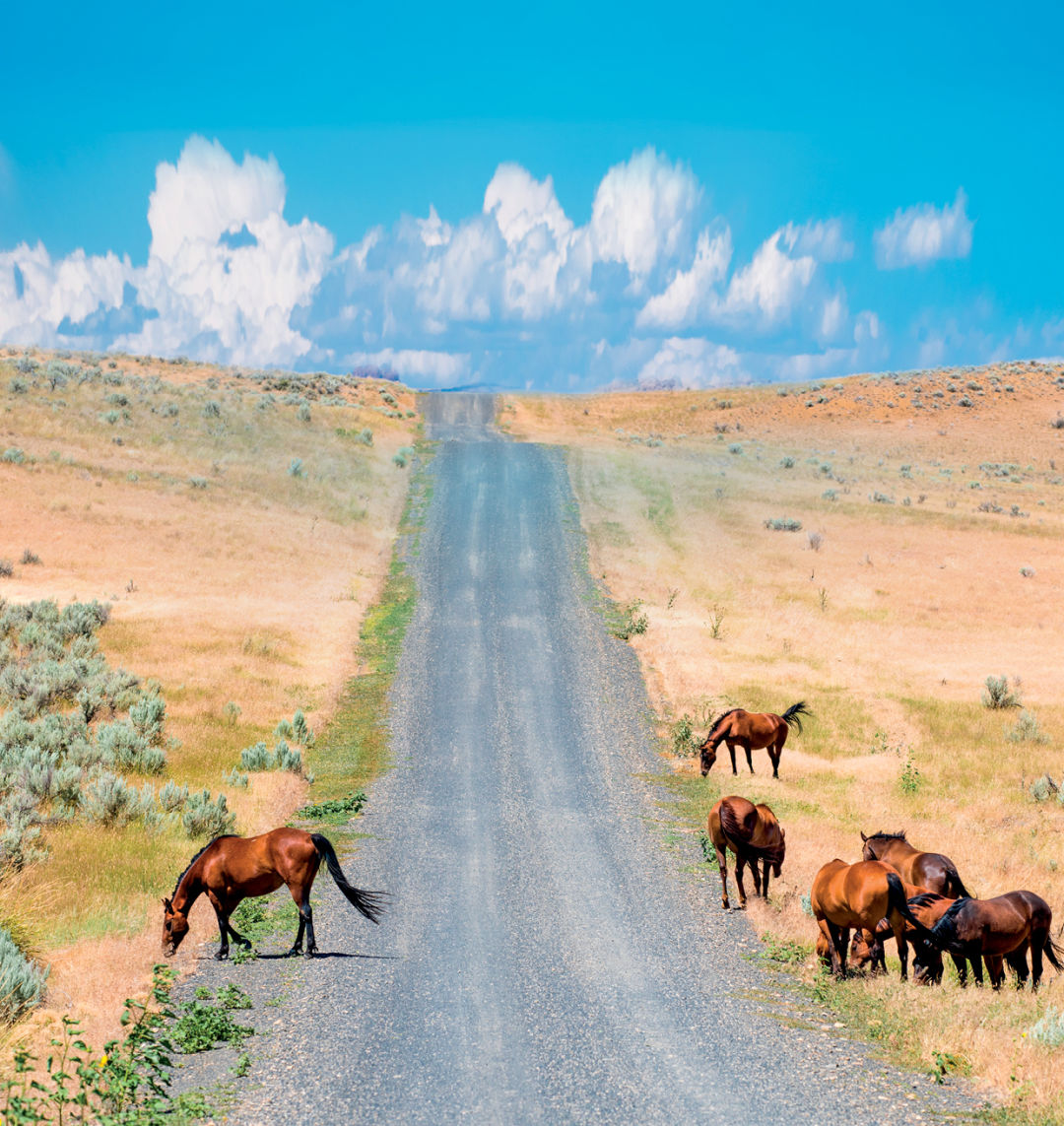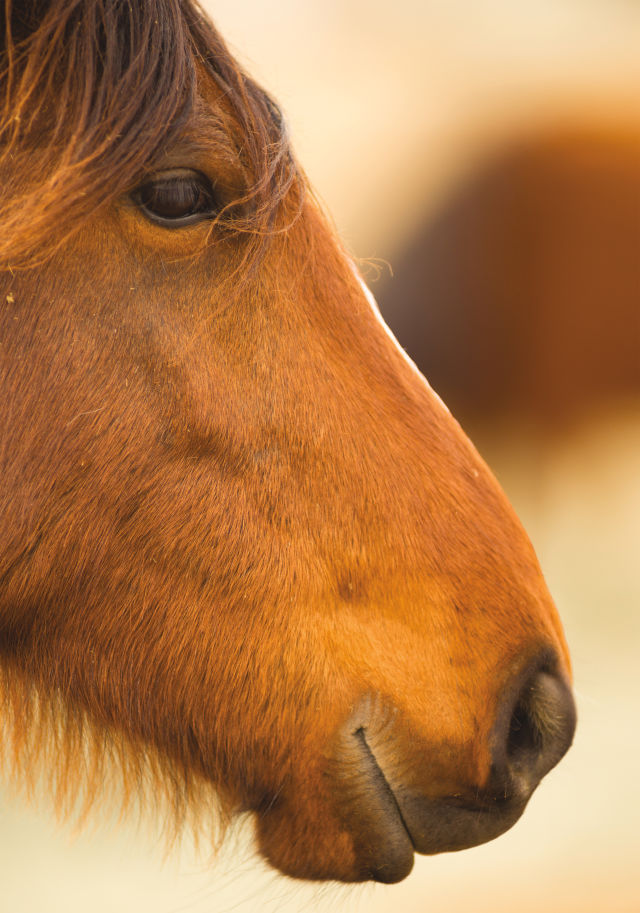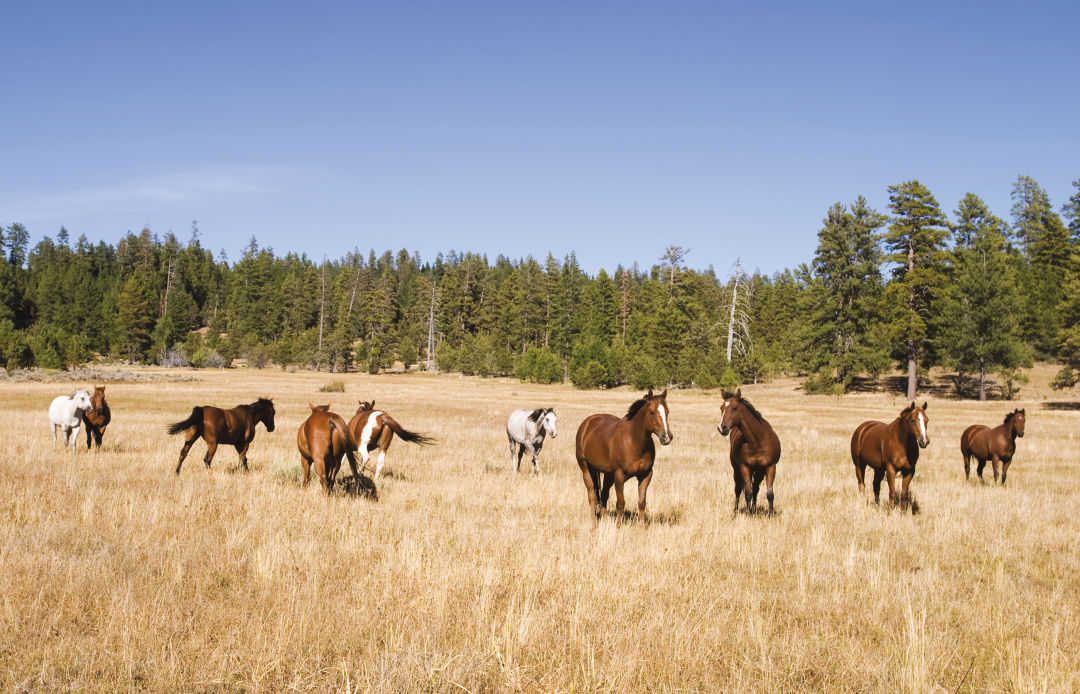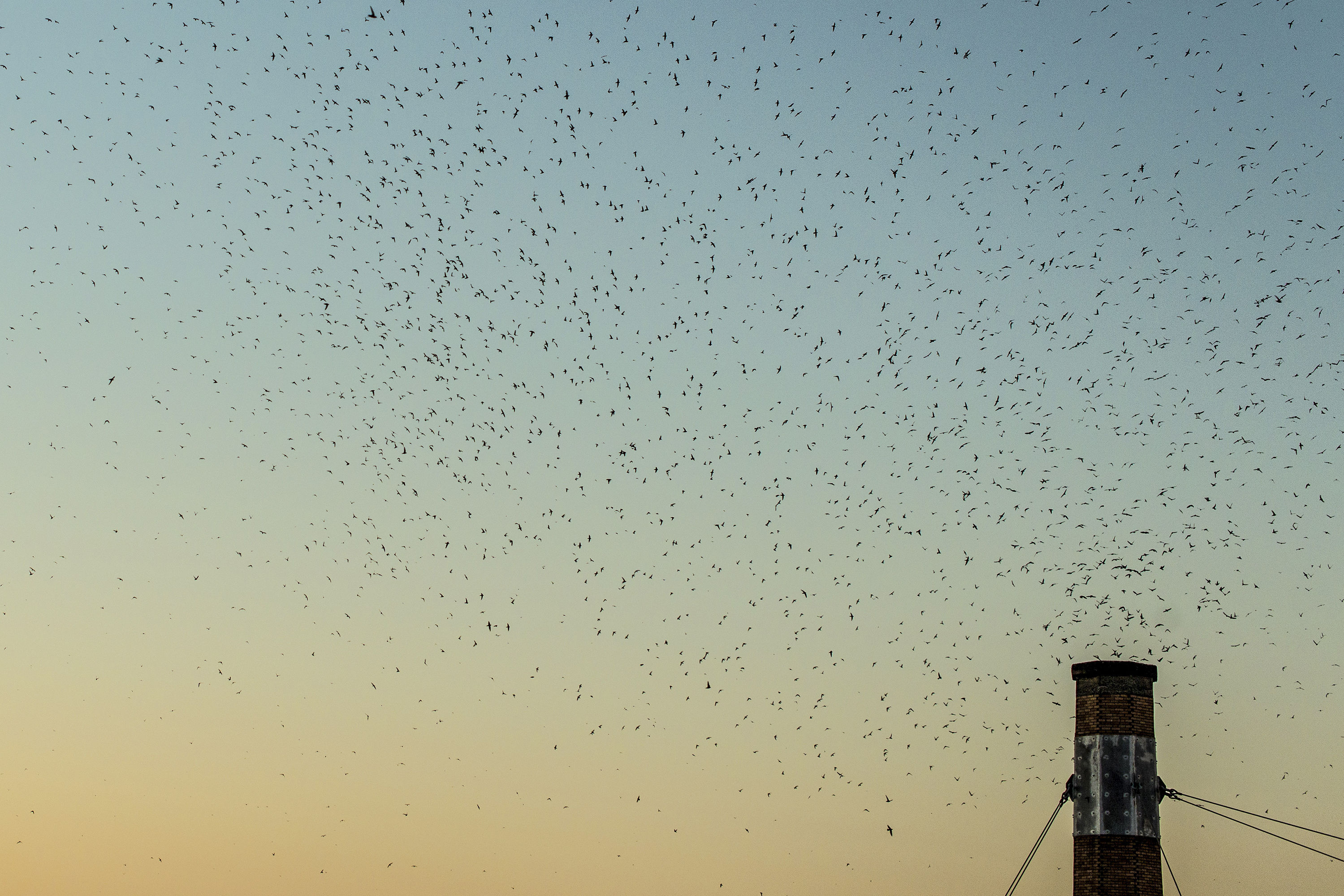Does Oregon Have Too Many Wild Horses?

If you’ve seen them even once, count yourself lucky: galloping east of Reno; nuzzling, sleek and pied-colored, on barrier islands off the Virginia coast; foraging near Oregon’s Steens Mountain. No fences corral America’s wild horses. They’re not tagged or trained or dissuaded from roaming the public lands they call home—some 27 million acres across 10 states.
In fact, no one knows, exactly, how many mustangs roam America—somewhere between 75,000 and 83,000, depending on the source. In Oregon, the working number is around 4,700. But no matter how many mustangs gallop through America’s forests and plains, if Congress approves a Bureau of Land Management plan this fall to reduce that population, thousands of iconic ungulates could soon face grave consequences.
The BLM plan, outlined in its pending 2019 budget request, bemoans the escalating cost of caring for “excess” mustangs in off-range BLM corrals and pastures—46,000 horses at last count. And yet, the BLM’s 2019 budget requests $13 million less for the program that manages those holdings. The agency instead wants Congress to authorize a “full suite of tools” to thin the herd, permanently. Euthanasia, restricted as a means of population control since 1971, is one of those tools. Another—a female sterilization procedure called ovariectomy via colpotomy—is also sometimes fatal.

“It’s used on livestock,” says Suzanne Roy of the national American Wild Horses Campaign. “But in a heifer, the ovaries they’re removing are the size of a thumb. In horses, they’re the size of a fist. It’s a much larger incision with much greater risk.”
The controversial proposal goes to the heart of an American conundrum: are these feral equines “living symbols of the West,” or landscape-tramplers that endanger livestock forage? The tension dates back to 1971, when Congress tasked the Interior Department to protect “all wild free-roaming horses and burros” from “capture, branding, harassment, or death,” and called for a baseline inventory of the population. Yet the same act also directed BLM, part of the Interior Department, to keep mustang numbers low enough to maintain “a thriving natural ecological balance.”
How many horses is that? Congress specified no target number. So BLM set out to try to keep the total mustang population at the 1971 level—roughly 27,000 wild horses. (The current target is a similar number—meaning tens of thousands of horses could potentially be exterminated.) Activists like Roy argue that the 1971 numbers represent a population trending toward extinction—the very reason Congress acted in the first place. This paradoxical mandate—protect, but limit—leads to a variety of population management techniques. BLM darts mares with birth control, hires “helicopter cowboys” to chase horses into baited traps for relocation to corrals, and auctions off horses and foals kept in its off-range pastures and corrals.
As the agency considers even more controversial measures, Oregon plays a key role. The BLM office in Burns plans to test the ovariectomy procedure on mares from the wild Warm Springs Herd, perhaps as early as this fall. According to BLM spokesperson Tara Thissell, if the mares recover well and can be successfully reintegrated with the herd afterward, the program could roll out to the rest of the West—though there might not be enough money for that.
“The goal would be to spay a horse and put it back on the range,” says Thissell. “But we don’t have a lot of research on it being done on wild horses before.”
According to Thissell, her agency’s competing priorities (and budget quandaries) are difficult to balance to everyone’s satisfaction.

A herd of wild horses roaming in Central Oregon
“There are hundreds of laws and policies and regulations that the BLM has to follow,” says Thissell. “We’re mandated to protect wild horses and burros. And we’re mandated to provide livestock grazing. And we’re mandated to take care of the rangeland. To the general public—and even to us, sometimes—it feels like those might be conflicting.”
Roy reserves more concern for the BLM’s pursuit of euthanasia as a “tool.” If Congress approves that request this fall, Roy expects wild mustangs’ legal protection will effectively be moot, vulnerable to being picked off in the wild or slaughtered en masse in the BLM’s holding facilities. If mustangs were cows, she says, it might be palatable. But they’re not, she notes; the difference is the poetry of their genes, a mix of colonial Spanish breeds and cavalry horses bred for war.
“These horses were part of every important development in America,” says Roy. “From the Spanish bringing the horse back to North America to the settling of the West, all of that history is in the blood of the horse. They’re like America: a melting pot.”




